Format(s):
SIG Perspectives
Case study is a valuable instructional tool for advancing knowledge and skills in clinical practice. In this SIG 4 Perspectives activity, learners will read three peer-reviewed case study presentations emphasizing unique aspects of stuttering treatment in preschool children and adults.
Format(s):
On Demand Webinar
Individuals who stutter--as well as their families--can experience a range of emotions, thoughts, and interactions around stuttering that can negatively impact quality of life. Counseling is a critical area of SLP practice to address these needs. This on demand webinar addresses the need for counseling, essentials of counseling, and principles of effective and practical counseling for individuals who stutter and their families.
Format(s):
Journal (Online)
The articles in this journal self-study explore a variety of aspects of working with adolescents who stutter. Using different research methods, the articles discuss assessment procedures, readiness for change, stuttering management, mental health, and interactions with peers, family members, and teachers.
Format(s):
SIG Perspectives
In this SIG 4 activity, authors describe ways to (a) increase speech-language pathologists’ comfort with treating stuttering by providing a structured grouping of activities centered around using education, ease, and empowerment (Gore & Margulis); (b) continue using empirical evidence and clinical experience to make informed decisions about assessment procedures for young children who stutter (Singer & Kelly); and (c) provide holistic speech-language therapy services for stuttering using telehealth (McGill & Schroth). Each of these articles provides practicing clinicians ways to gain confidence in their abilities to provide evaluations and treatment across delivery
paradigms.
Format(s):
SIG Perspectives
In this SIG 4 activity, authors detail the myriad of ways that stuttering can influence aspects of life, from parents’ differing perceptions of their child who stutters (Mostafa, St. Louis, El-Adaway, Emam, & Elbarody), to completion of turns by people who do not stutter when the person who stutters experiences stuttering (Kondrashov & Tetnowski). These articles help readers understand the pervasive nature that stuttering exerts on the lives of people who stutter across the lifespan.
Format(s):
SIG Perspectives
In this SIG 4 activity, authors explore ways to provide experiential learning to graduate students enrolled in stuttering courses (Palasik, Hughes, & Ellis) and discuss the clinical experiences of school-based speech-language pathologists related to stuttering (Panico, Daniels, Yarzebinski, & Hughes), strategies for teachers to support children who stutter (Cozart & Wilson), and ways to interrupt the narrative of ableism that surrounds the treatment of stuttering (Gerlach-Houck & Constantino). Each of these articles provides a unique perspective on ways that professionals can seek to create a more supportive environment for our clients who stutter by changing the foundations of the way we teach preservice clinicians, support our school-based colleagues, and address the narrative of ableism that pervades our culture.
Format(s):
On Demand Webinar
This on demand webinar presents a framework for assisting teens and adults in the design and implementation of stuttering intervention. The course is based on the concept that meaningful stuttering intervention and outcomes are based in the client's and clinician's shared understanding of the importance and weight that the client places on changing the physical attributes of stuttering, their thoughts and feelings about it, their use of avoidance strategies, and how ready they are to change one or all of these components.
Format(s):
SIG Perspectives
These articles show the breadth of topics relevant to the understanding and treatment of fluency and fluency disorders. The articles include topics on the impact of allergies on the sleep of children who stutter and using solution-focused principles to elicit perspectives on therapeutic change in older children who stutter and their parents.
Format(s):
On Demand Webinar
This course discusses clinical considerations for stuttering assessment and treatment when working with individuals from diverse cultural and linguistic backgrounds. The course addresses cultural perspectives on stuttering, influence of dialect and bilingualism, family dynamics, stigma, standardized testing, language sampling, counseling, and treatment activities. Speakers also explore the importance of clinicians considering the impact of their own implicit biases.
Format(s):
On Demand Webinar
This on demand webinar will provide guidelines for dismissal from stuttering treatment to create a safety net for children who stutter. The speakers will discuss common barriers to appropriate discharge and strategies for overcoming these barriers so SLPs can support children to enhance quality of life and develop communication confidence. The webinar will discuss establishing person-centered, individualized, and measurable goals at the time of evaluation; ensuring client-driven and dynamic treatment; using goals to guide decisions about dismissal; and providing ongoing support and maintenance during and following dismissal. This webinar – part of the SIGnature Series – was developed by SIG 4: Fluency and Fluency Disorders.
Format(s):
On Demand Webinar
This on demand webinar will provide practical, evidence-based strategies that target the psychological, emotional, and social domains of stuttering (the lower, underwater mass of the iceberg) to help clients progress from tendencies of avoidance to acceptance and openness. The speakers will discuss how to integrate basic interpersonal counseling strategies into person-centered treatment and then will guide attendees through creating acceptance-based holistic goals and objectives and documenting progress.
|

